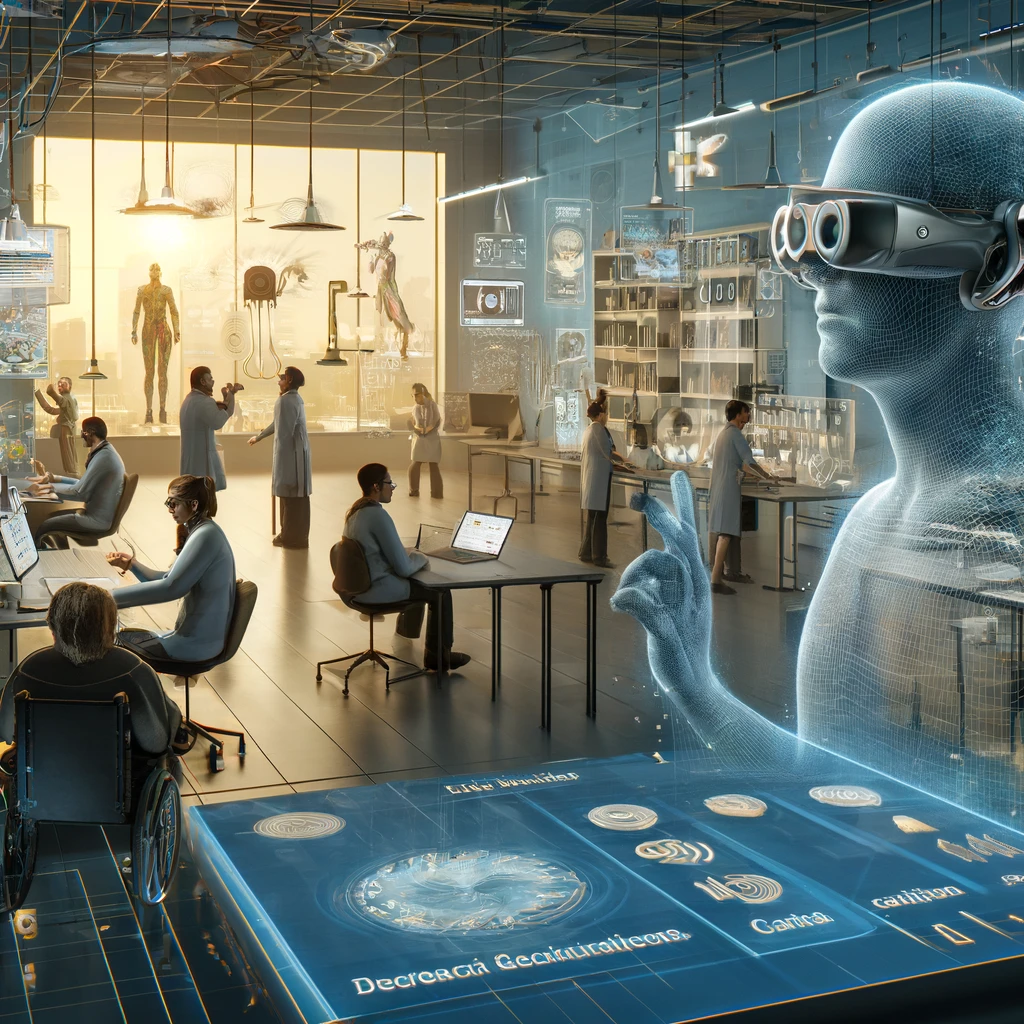In recent years, the landscape of assistive technology for the deaf and hard of hearing has undergone remarkable transformations, promising a brighter future for millions worldwide. The Consumer Electronics Show (CES) 2024 showcased groundbreaking innovations that reflect a world moving towards greater inclusivity.
Transcribe Glass represents a significant advancement in assistive technology for the deaf. Unlike previous devices that required a microphone for input, Transcribe Glass is designed to pick up speech from a distance, such as across a lecture hall. This technology could revolutionize communication in educational settings, making lectures more accessible to deaf students.
HealthScribe offers a breakthrough for medical communication. Utilized in emergency rooms, it provides offline, fast, and privacy-safe live transcriptions for Deaf and hard-of-hearing patients, as well as translations for patients with limited English proficiency. This tool exemplifies the integration of assistive technology in critical environments like healthcare.
Captioning and Hearing Glasses, such as those from EssilorLuxottica and XanderGlasses, are emerging as game-changers. These glasses provide real-time captions of conversations, making social interactions and professional engagements more accessible for individuals with hearing impairments.
The evolution of technology for the deaf and hard of hearing has been characterized by a shift from amplifying sound to enhancing overall communication and accessibility. Innovations like automatic speech recognition (ASR) and video calling platforms have opened up new avenues for interaction. Furthermore, visual alert systems have been developed to convert everyday signals into accessible formats, enhancing safety and independence.
Another notable development in the realm of assistive technology is the introduction of apps and devices that offer real-time text (RTT) and text-to-speech (TTS) capabilities. These tools allow for instant messaging and the conversion of written text into spoken words, greatly facilitating communication for the deaf and hard of hearing in various settings, including education and employment.
Looking ahead, the future of assistive technology for the deaf holds even more promise. Innovations like the bionic ear, which communicates directly with the brain, and advanced virtual and augmented reality tools, are on the horizon. These developments have the potential to further revolutionize how deaf individuals interact with the world and participate in society.
The impact of these technologies goes beyond facilitating communication; they play a crucial role in enhancing the mental and emotional well-being of the deaf community, fostering a sense of independence and self-worth. Yet, challenges such as cost and accessibility remain. Overcoming these hurdles is essential to ensuring that these life-changing technologies reach those who need them most.
In conclusion, the advancements in assistive technology are not just technological triumphs; they are beacons of hope and empowerment for the deaf community. They symbolize a future where barriers are broken down, and communication and accessibility are within everyone’s reach.

Educational Enhancements through Technology
Assistive Listening in Classrooms: In educational settings, technology plays a crucial role in overcoming challenges such as background noise and distance from instructors. Assistive listening systems, captioning services, and sign language interpreters ensure that deaf students can fully comprehend and actively participate in classes, fostering inclusivity and equality in learning environments.
Telecommunication Advancements
Beyond Traditional TTY: The evolution of telecommunication services has been remarkable, transitioning from text telephones (TTY) to more sophisticated tools like videophones, smartphones, and instant messaging. These modern solutions offer real-time interactions, ease of use, and enhanced connectivity between hearing and deaf individuals, promoting better understanding and collaboration.
Human Impact and Accessibility Challenges
Empowerment and Independence: The impact of assistive technologies extends beyond practical communication aids. They empower deaf individuals, significantly improving their mental and emotional well-being. These technologies instill a sense of independence and self-worth, which is vital for their overall quality of life. However, issues like the cost and availability of these technologies persist, necessitating ongoing efforts to make them accessible to all segments of the deaf community.
Conclusion: A Future of Inclusivity and Accessibility
The Transformative Journey: The advancements in assistive technology for the deaf and hard of hearing represent a journey of relentless innovation and progress. These developments have not only facilitated communication but have also enhanced the lives of deaf individuals in multifaceted ways. The promise of future technologies like the bionic ear and virtual reality tools further brightens the prospects of breaking down communication barriers and fostering a more inclusive and accessible society.
Final Thought: As we look to the future, the continuous evolution of assistive technology heralds a world where barriers to communication are increasingly diminished. This journey is a testament to the human spirit’s drive towards inclusivity, ensuring that every individual, regardless of their hearing ability, can engage fully with the world around them. The advancements in technology are not merely a triumph of innovation; they symbolize hope and empowerment, paving the way for a society that values and facilitates accessibility for all.
References:
(Unspoken ASL)
(Nagish App)

